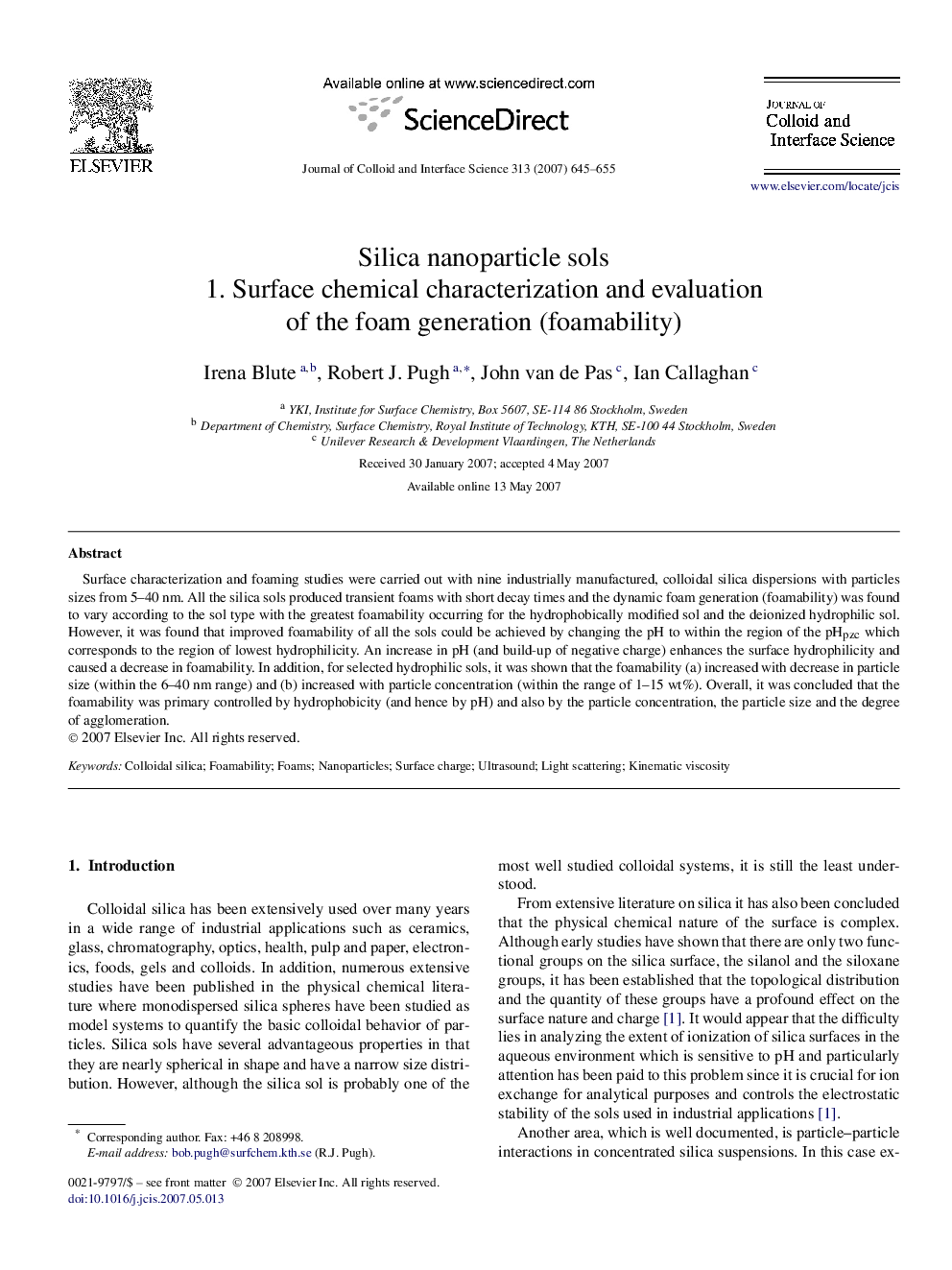| Article ID | Journal | Published Year | Pages | File Type |
|---|---|---|---|---|
| 611802 | Journal of Colloid and Interface Science | 2007 | 11 Pages |
Surface characterization and foaming studies were carried out with nine industrially manufactured, colloidal silica dispersions with particles sizes from 5–40 nm. All the silica sols produced transient foams with short decay times and the dynamic foam generation (foamability) was found to vary according to the sol type with the greatest foamability occurring for the hydrophobically modified sol and the deionized hydrophilic sol. However, it was found that improved foamability of all the sols could be achieved by changing the pH to within the region of the pHpzc which corresponds to the region of lowest hydrophilicity. An increase in pH (and build-up of negative charge) enhances the surface hydrophilicity and caused a decrease in foamability. In addition, for selected hydrophilic sols, it was shown that the foamability (a) increased with decrease in particle size (within the 6–40 nm range) and (b) increased with particle concentration (within the range of 1–15 wt%). Overall, it was concluded that the foamability was primary controlled by hydrophobicity (and hence by pH) and also by the particle concentration, the particle size and the degree of agglomeration.
Graphical abstractSilica nanoparticles can be surface active if adsorbed to an air/liquid interface and therefore considered as the substitute for surfactants as stabilizer of foam system.Figure optionsDownload full-size imageDownload as PowerPoint slide
